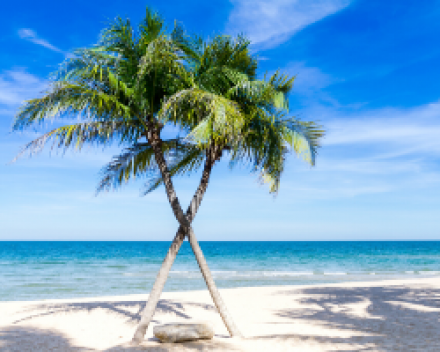Chol Chnam Thmay Festival in Cambodia - A unique festival of the Khmer People
2Cambodia, located in Southeast Asia, attracts tourists through its stunning landscape and outstanding culture, traditions, and customs. One of the most meaningful festivals in Cambodia is the Chol Chnam Thmay Festival, also known as the Khmer New Year. It's a time for families to come together, communities to unite, and for the entire nation to embrace the spirit of renewal and hope. Let’s find out detailed information about the festival with Handspan Travel Indochina!
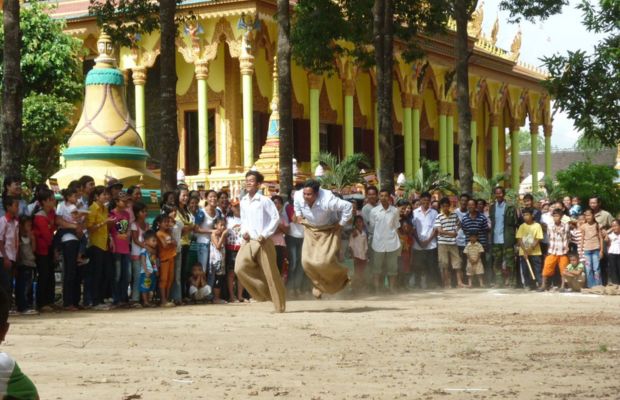
Chol Chnam Thmay Festival in Cambodia
Through this blog post, you will find out these pieces of information below.
General information about the Chol Chnam Thmay Festival
Chol Chnam Thmay Festival is a New Year Festival according to the traditional calendar of the Khmer people. In the Khmer Language, “Chol” means “Entering” and “Chnam Thmay” means “New Year”. This is an opportunity to honor and remember ancestors and celebrate the changing seasons in agriculture. The festival will take place around mid-April with many traditional rituals and attractive folk games.
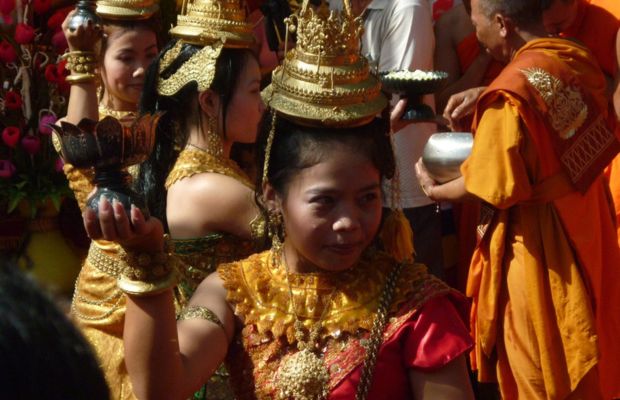
Chol Chnam Thmay Festival in Cambodia's rituals
For Khmer people, April is the transition point between the dry season and the rainy season. In the Khmer people’s belief, the change in natural conditions marks the beginning of a new year. The Chol Chnam Thmay Festival is held to pray for a new, bountiful harvest for the local people. Due to its meaningful values, in the past, the Chol Chnam Thmay Festival used to last up to half a month. However, at present, it only lasts for three days, excluding the preparation work for many days before.
Preparation and New Year’s Eve time
Before the Chol Chnam Thmay Festival in Cambodia, the air is filled with a bustling preparation atmosphere. These days, the local people clean and redecorate their houses, and repair household items. Khmer people buy new clothes and prepare themselves and their children with the most beautiful and clean outfits. Besides, traditional foods are lovingly prepared, ensuring that every aspect of the festival is imbued with warmth and tradition. All daily work stopped, urban workers returned to their hometowns, everyone rested, and cattle roamed freely. From the crowded markets to tranquil villages, everyone is excited to prepare for their Tet Holiday.
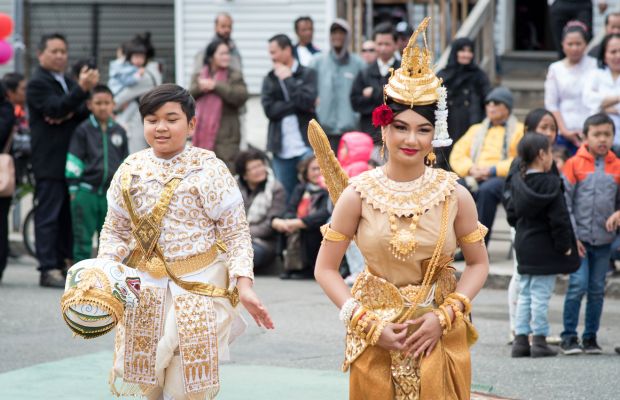
Local people in stunning outfits
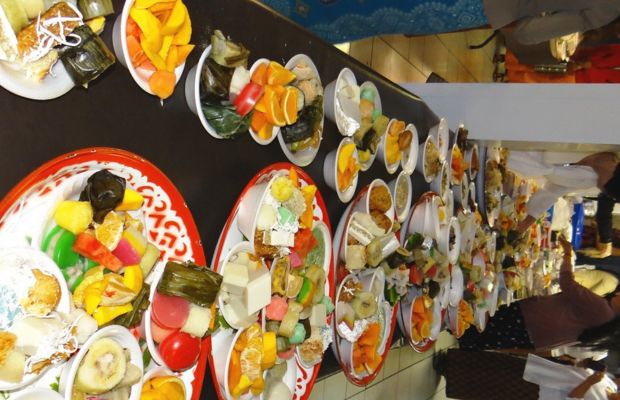
Preparing food for the Chol Chnam Thmay Festival
The time of New Year’s Eve in the Khmer concept is not like the Lunar New Year or New Year, which takes place at midnight. Instead, to know the time of New Year's Eve, A Cha in the temples will hold a ceremony and notify people. A Cha is a former monk, has a high position in society, and is always respected by the Khmer people. On New Year's Eve, altars are placed in the most solemn places to welcome gods and ancestors. On the altar, Khmer people often display a tray of offerings including five candles, five incense sticks, five cups of green rice, a pair of coconuts, two glasses of water, fresh flowers, and 11 types of fruit. Family members sit and solemnly worship in front of the altar, pray, and hope to be blessed in the new year.
Three days of the Chol Chnam Thmay Festival
During the three days of the Chol Chnam Thmay Festival in Cambodia, many important activities and rituals take place. On these days, the streets come alive with music, dance, and laughter as communities gather for feasting and merriment. Let’s see what the locals do during these three days.
The first day
The first day of the Chol Chnam Thmay Festival is known as the Chol Sangkran Thmay day. This day is dedicated to making offerings to the Buddhist monks and paying respects to their ancestors. Fragrant incense fills the air as families gather to present food, candles, and flowers at the feet of Buddha statues. The most important activity of this day for the Khmer people is the Great Calendar Procession (Maha Sangkran), which is held to send away bad luck and wish for a lucky new year. Everyone will take a bath, wear a brilliant outfit, and go to the temple. The procession takes place at a pre-selected auspicious time, regardless of morning or afternoon.
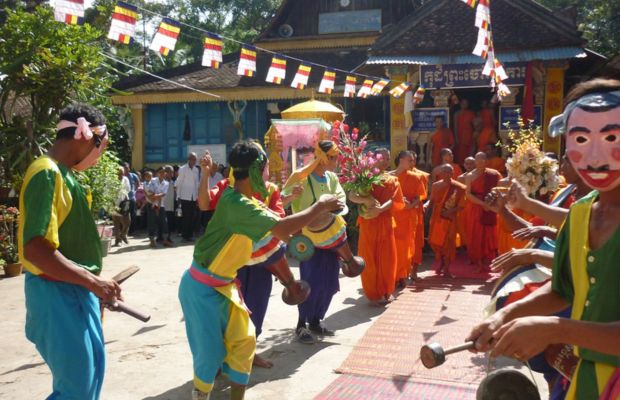
Maha Sangkran procession
The Maha Sangkran is placed in a gilded lacquered tray and placed on a palanquin to carry it around the main hall. Besides being a ceremony to welcome the new year, it is also an omen for the new year. The new year is good or bad depending on whether the procession is complete or not. After being carried three rounds around the main hall, the locals will enter the main hall to hold the ceremony. Then, everyone goes to worship Buddha and chanted sutras to welcome the new year. When celebrating the procession, some pagodas also organize a five-tone orchestra or a Chhay-dam dance group with the leader wearing a mask and holding a stick in hand.
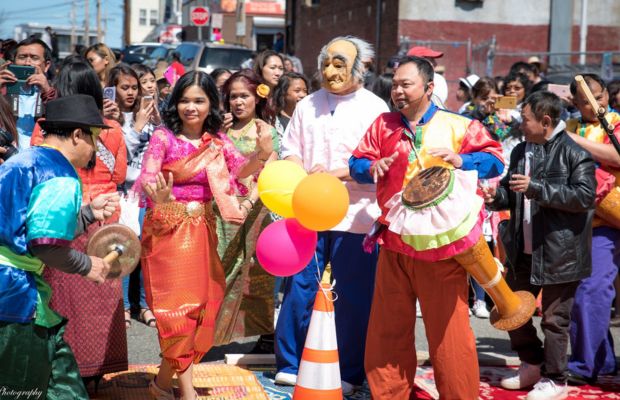
Chhay-dam dance
The second day (Wonbof day)
On the second day of the festival, Wonbof Day, local people have the tradition of offering rice and banking up sandy hillocks. Normally, during the rice offering ceremony, monks will carry alms bowls to beg for alms in the mornings. However, on the Chol Chnam Thmay Festival, Khmer people will bring rice and food to the temple to offer to the monks and listen to the recitation of Buddhist scriptures.
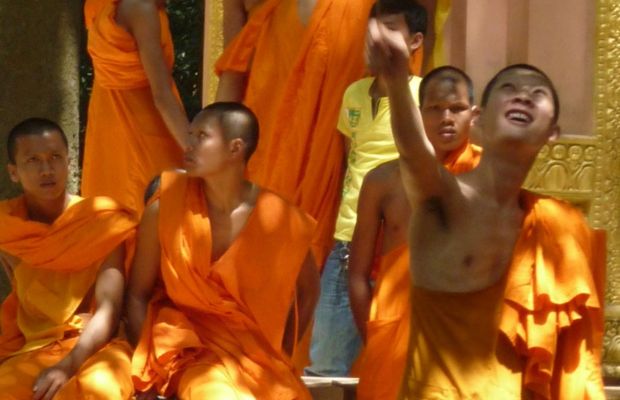
Local monks in the temples
The rice offering ceremony begins with chanting and sermons by the Acha monks, then the monks chant sutras, perform thanksgiving ceremonies for those who made the food, and also bring the food to the souls of their loved ones. After that, the monks enjoy the food and chant prayers to bless the donors and pray for the departed souls. It is a good traditional custom of the Khmer people maintained from generation to generation.
Besides the rice offering ceremony, banking up sandy hillocks is another activity on the second day of the Chol Chnam Thmay Festival. This activity is held to show the efforts and sincerity of the participants in building the sand mountain. Every grain of sand built up into a mountain will free a sinner in the world. Therefore, Khmer people are very enthusiastic about building sand mountains, hoping for Buddha's blessings.
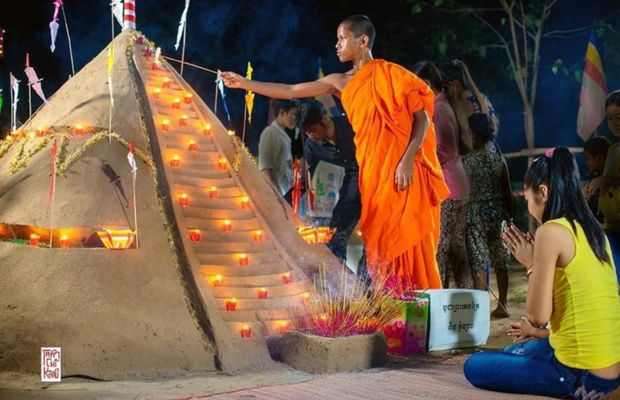
Building sandy mountains in the Chol Chnam Thmay Festival
The third day (Long Sak Day)
The third day is also the last day of the Chol Chnam Thmay Festival. On this day, the Khmer people will join the Buddha statue bathing ceremony and Requiem Ceremony. The Buddha statue bathing ceremony usually takes place in the afternoon. The Achas placed the Buddha statue in a large basin with fresh flowers and pure water embalmed with perfume. The Acha read the sutras, and the monks used flower branches dipped in fragrant water to bathe the Buddha statue. After the Buddha statue bathing ceremony at the temple, returning home, Khmer people continue the Buddha statue bathing ceremony at home. The ritual aims to express gratitude to Buddha, wash away the misfortunes of the old year, and welcome good luck in the new year.
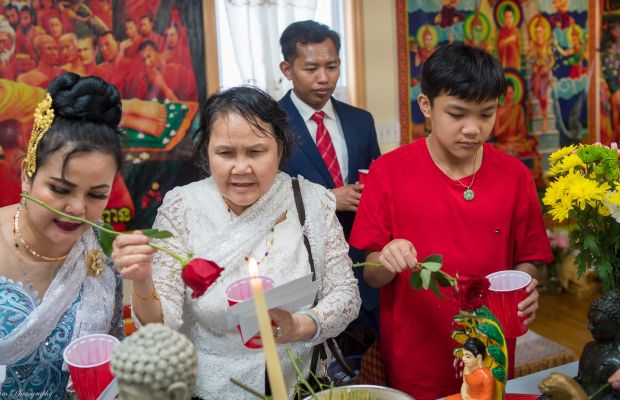
Buddha statue bathing ceremony
After finishing the ceremony of bathing the Buddha statue ceremony, everyone and the Achas gathered at the ossuary tower area to pray for the souls of the deceased monks and their relatives. Khmer people place a tray of offerings on a mat in front of the tower, burn incense, and listen to monks chanting sutras. While reciting prayers, monks sprinkle fragrant water on believers and around the tower to spread happiness to them and their families.
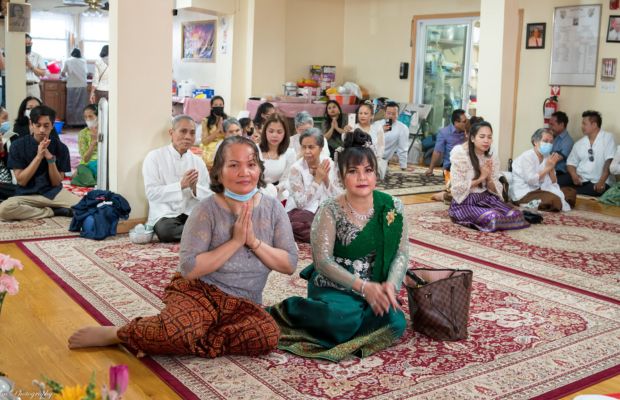
Local Khmer people in the Chol Chnam Thmay festival
In conclusion, the Chol Chnam Thmay Festival is not only a celebration but is also one of the symbols of Cambodia’s culture, traditions, and customs. If you travel to Cambodia these days, don’t miss out on the opportunity to immerse yourself in the crowded atmosphere and learn about the rich cultural heritage of the Cambodian people.
__logo.png)
__hanoi-water-puppets.jpg)
__angkor-wat-blue-reflections.jpg)
__vientiane-buddha-park-monks.jpg)
__bagan-dhammayazika-dusk.jpg)
